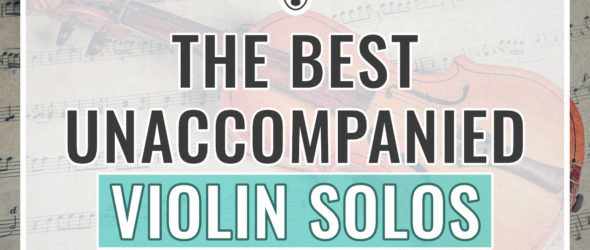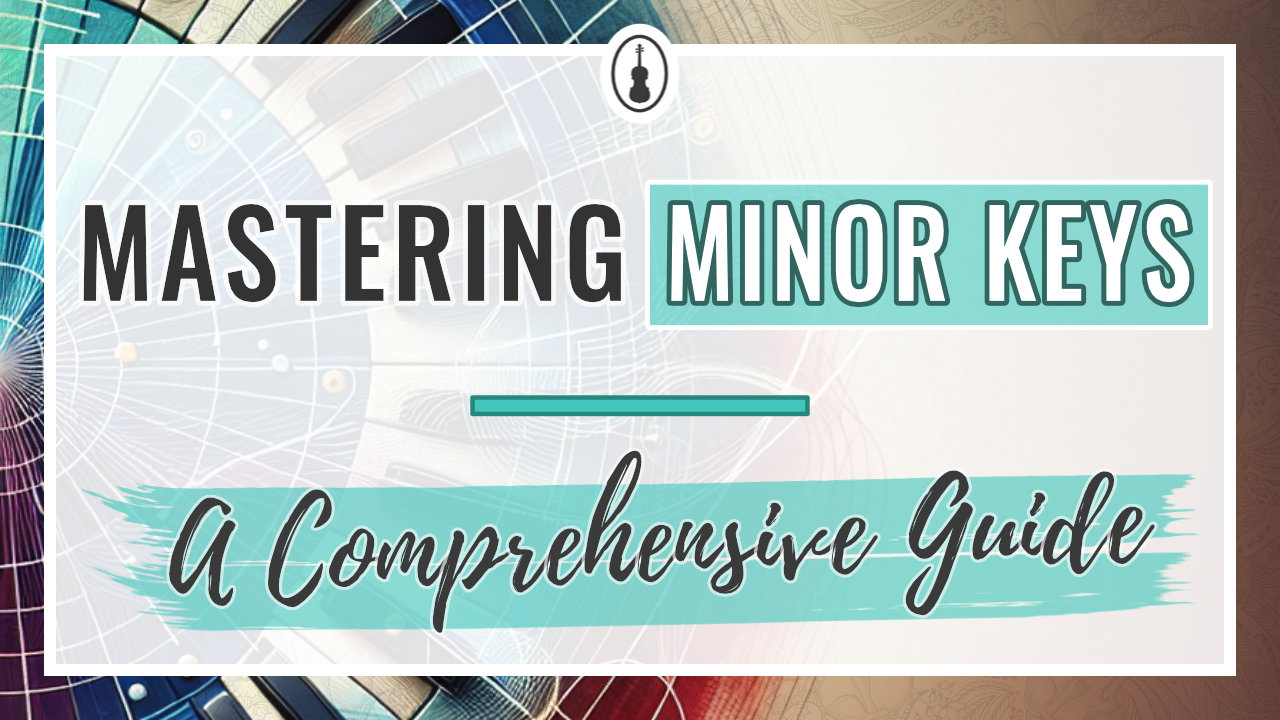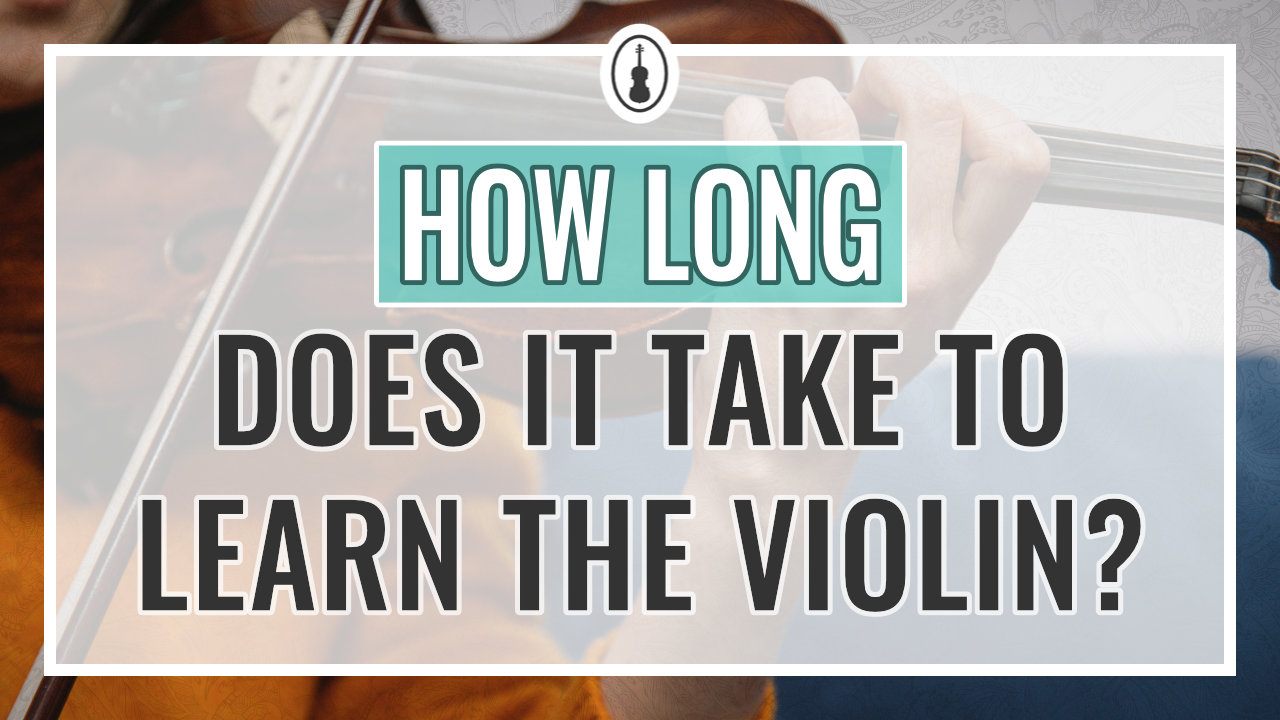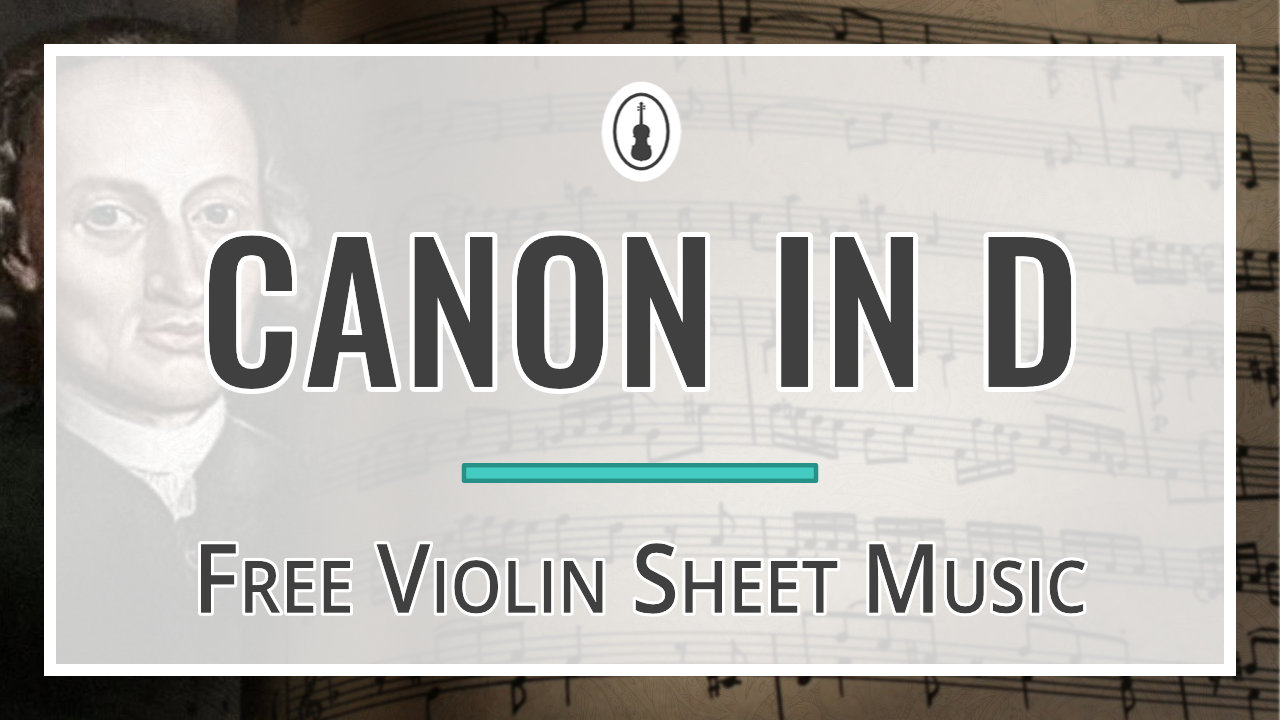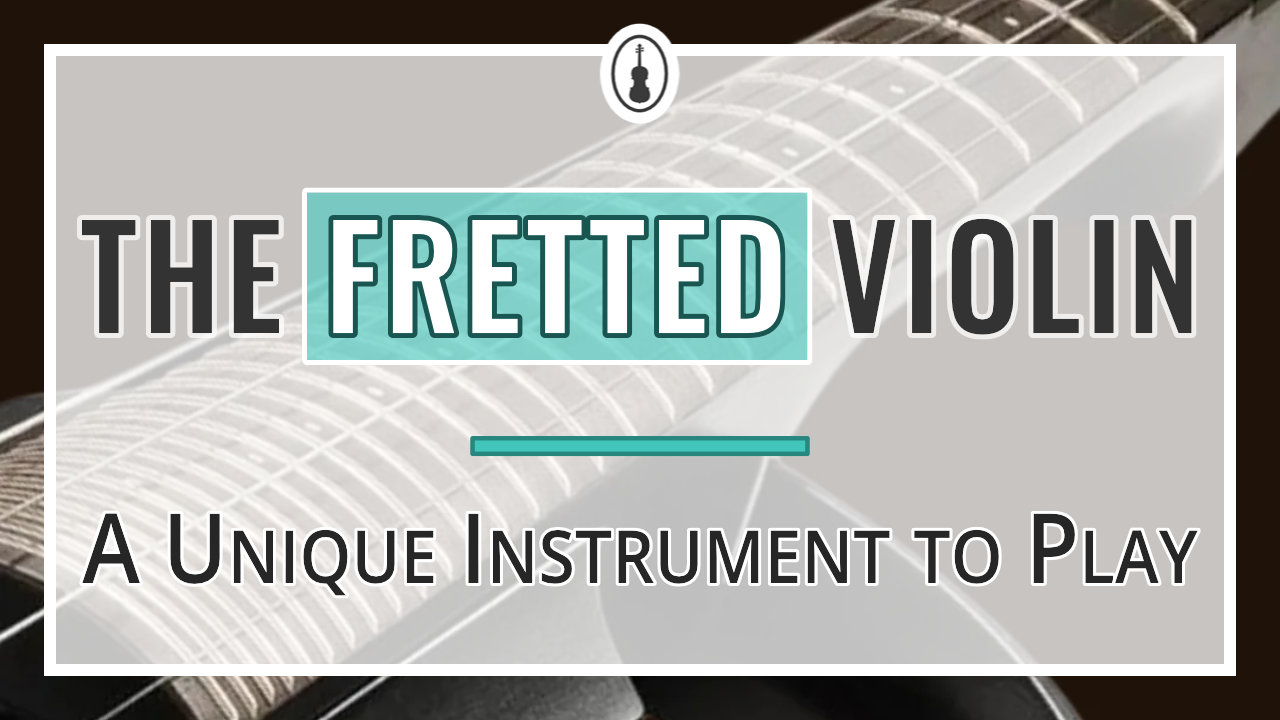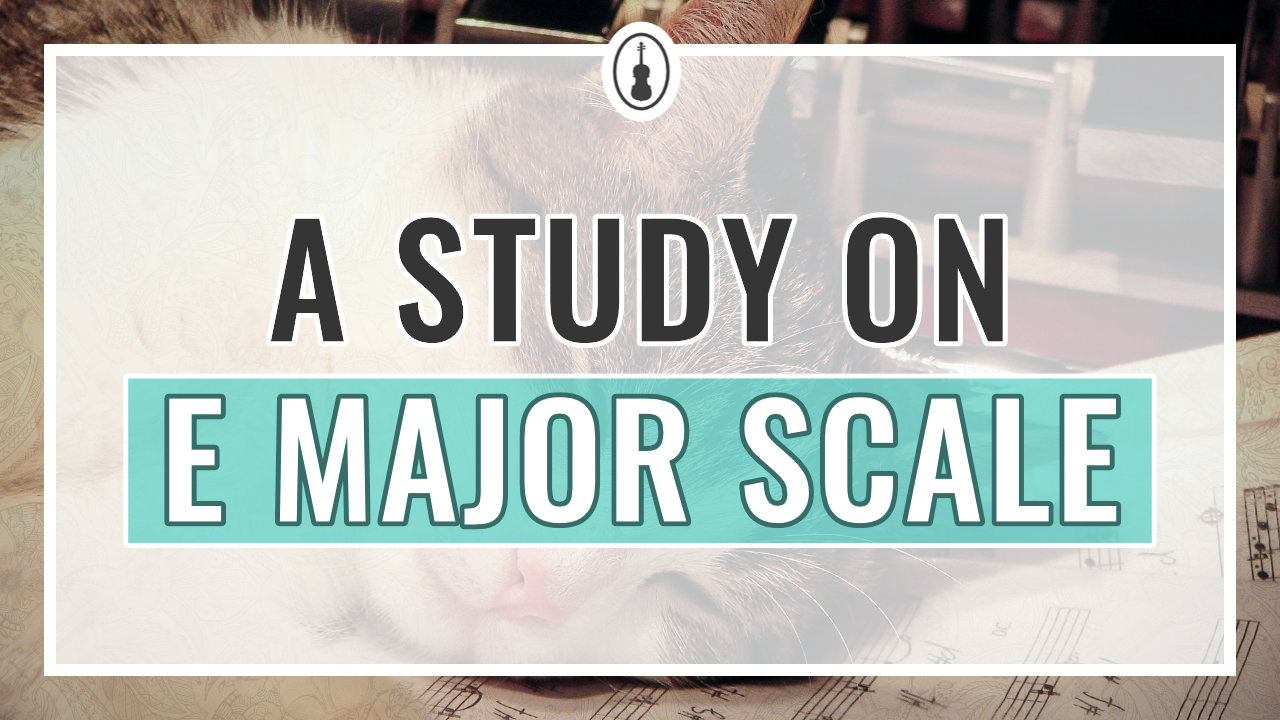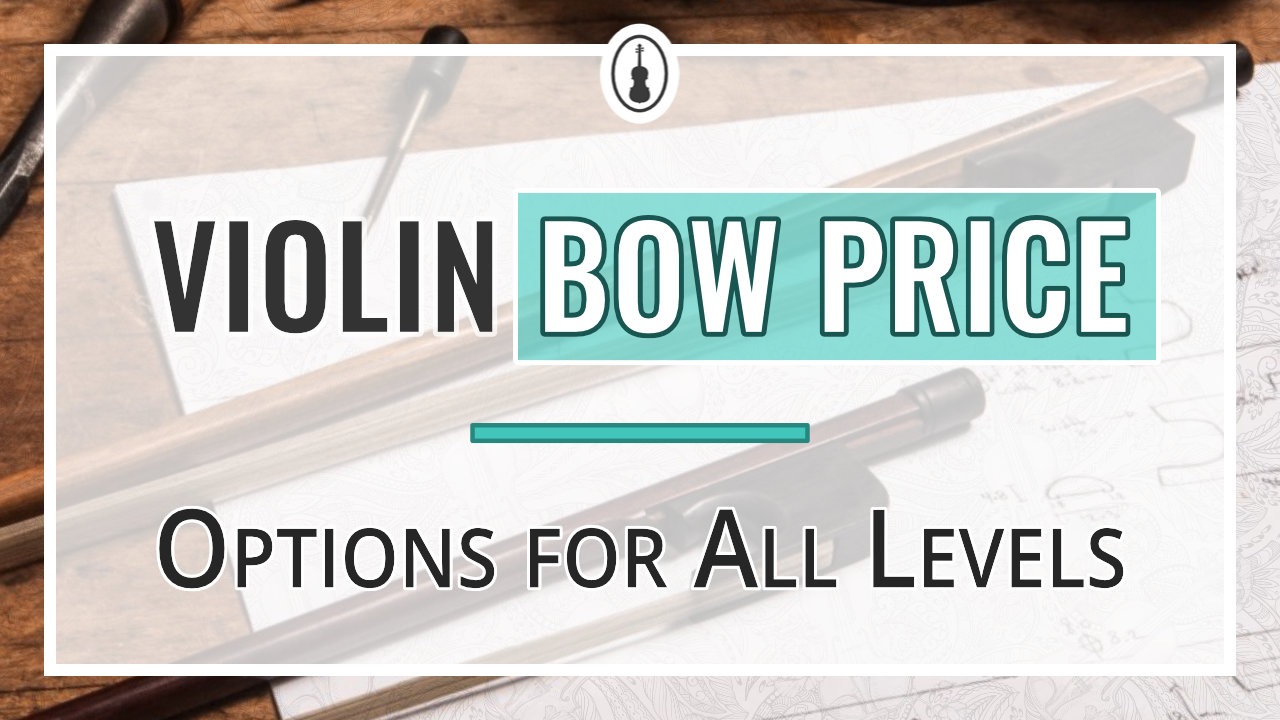The violin is a beautiful melodic instrument, and there’s a wide array of unaccompanied violin solos that show off the versatility of our gorgeous instrument. Unaccompanied means there’s only one musician playing, with no other background musicians.
Unaccompanied violin music is usually very difficult because one violinist needs to provide all the elements the audience wants to hear to make a good performance. Lots of aspects, like the melody, harmony, rhythm, and drive all need to come from one person playing just one instrument.
These are a few of my favorite unaccompanied violin solos for anyone ranging from beginner to expert – I guarantee you’ll find a piece of music you’ll want to learn from this list!
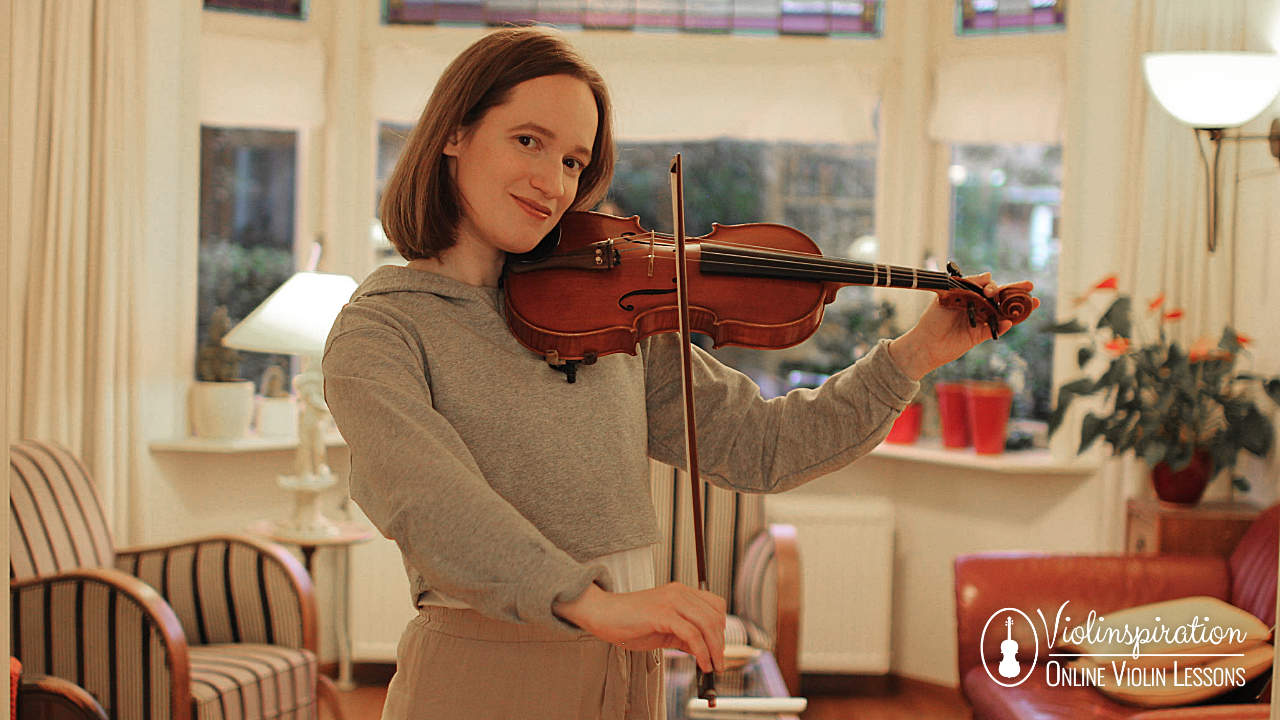
Beginner
When you think of a violin solo, what comes to mind? Probably something that sounds virtuosic and showy! Most of the famous violin solos are very difficult, so finding ones at a “beginner” level is actually quite difficult. However, the two pieces I’m sharing here with you are both beautiful and attainable.
Both pieces are in the key of D Major, which lays nicely on the violin. The first piece has slow, beautiful melodies, and the second has a lively dance feel. There might be a double stop or two, but they almost always include at least one open string, so you really only need to focus on finding one notewith your left hand at a time.
Jay Ungar – Ashokan Farewell
Ashokan Farewell was written about sorrow and longing, and is full of hauntingly beautiful melodies. It was used in the documentary The Civil War, even though it has no relation to the historical event. This is how it became so popular!
The piece is a waltz written in D Major, which is one of the easiest keys to play on a violin in the first position and that makes it a great solo to learn for beginner violinists! The slow tempo can help you feel confident that you’ll find each note in time.
Due to copyrights, I’m not able to make this sheet music available for free. Would you like to practice with my free sheet music instead? Click here to check out all available tutorials with free sheet music.
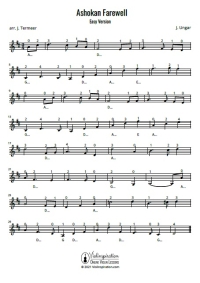
Franz Schubert – 9 Ländler in D major
Franz Schubert was an early Romantic era composer who wrote hundreds of vocal pieces and a lot of chamber and orchestral music. In almost everything he wrote, his “vocal” style really shines through the singing melodies of his works.
This solo violin piece is made up of nine different Ländler: an Austrian folk dance similar to a waltz. This was a really popular dance form in the late Classical-early Romantic era.
This is a great piece to learn if you’re starting to learn the third position. While most of the movements are in the first position, there are a few passages up in the third position.
Some of the Ländler also include some trills, and No. 7 has a few double stops. If you’ve played sixths, thirds, and open fifths, then you’ll do fine!
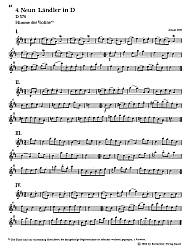
Franz Schubert – 9 Ländler in D major
Free Violin Sheet Music
Intermediate
Intermediate unaccompanied violin solos are a big step up from beginner violin solos and those listed here are a bit more difficult than the intermediate level in Julia’s Violin Academy. Violin solos are never easy, and for the music of this caliber, everything starts to be difficult.
In order to play the following intermediate-level unaccompanied violin solos, you’ll need to know how to play in many different keys. You’ll also want to feel comfortable playing in a few different positions on the violin. Campagnoli’s 7 Divertimenti is a great solo to learn to become comfortable in positions 1-7!
Henry Purcell – Prelude in G Minor
Not much is known about Purcell’s Prelude for solo violin, but it is a short and sweet Baroque piece to learn. It reminds me a bit of Heinrich Ignaz Franz Biber’s Mystery Sonatas. If you like those but aren’t ready to learn them yet, try this instead!
The sheet music is available to download for free:
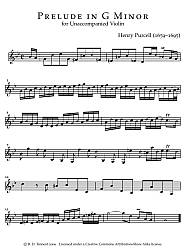
Henry Purcell – Prelude in G Minor
Free Violin Sheet Music
George Philipp Telemann – 12 Fantasias for Solo Violin
George Philipp Telemann was a German Baroque composer who was said to have written over 3,000 pieces of music! He was a very prolific composer during his time and was friends with both J.S. Bach and Handel.
Telemann’s 12 Fantasias for Violin was published in 1735, written after his fantasias for solo flute, and solo harpsichord. He may have envisioned the 12 Fantasias as two sets of 6 movements, because the 7th Fantasia quotes the 1st, making it feel like a second set of six.
Each movement is written extremely well for the violin since Telemann himself was a violinist. This work is a great choice to learn if you love J.S. Bach’s Partitas and Sonatas but aren’t able to play them yet.
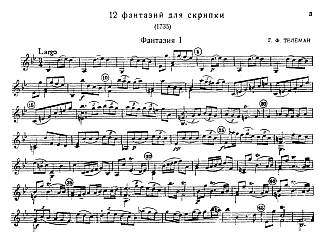
George Philipp Telemann – 12 Fantasias
Free Violin Sheet Music
Rudolphe Kreutzer – 42 Etudes or Caprices for Solo Violin
Rudolphe Kreutzer’s 42 Etudes for violin were written around 1796 to demonstrate the new Tourte bow. Since the Tourte bow is practically the same as our modern violin bow, these etudes are great for learning some of the most commonly used modern bowing techniques.
The etudes are sorted by the techniques they focus on, rather than by difficulty. By learning the etudes, you’ll strengthen your left and right hand coordination, trills, double stops, and bow control. These are some of the most popular violin etudes because of their great versatility!
Kreutzer is best known now for being a great violin teacher, but he was also a performer and composer. He helped create the French school of violin playing, and he even wrote 40 French operas!
You can download for free Kreuzer Etudes over here (Julia’s Violin Academy members only).
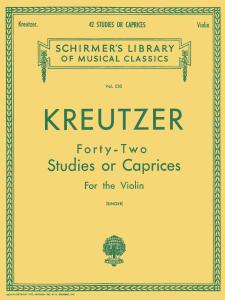
42 Studies or Caprices by Kreutzer
Support us for more FREE content No extra costs for you Recommended by Violinists
Grażyna Bacewicz – Kaprys polski (Polish Caprice)
Grażyna Bacewicz was a Polish violinist and composer in the 20th century. She studied composition with Nadia Boulanger, and violin with Carl Flesch – two of the most important musical figures in the world at the time.
While the Polish Caprice might sound simple at first, it includes a lot of large shifts and many double stops. Since this piece is short, it might feel a bit more accessible to learn.
Anything is possible if you start by playing slowly!
Unfortunately at the moment of publishing this blog post, the sheet music for Kaprys Polski isn’t available, but you can check on Amazon and on sheetmusicplus.com if it’s available again!
Bartolomeo Campagnoli – 7 Divertimenti
Bartolomeo Campagnoli was an Italian violinist and composer in the Classical era. He toured Europe as a violinist and wrote pieces for both the violin and viola.
Each Divertimento should be played in one position (make sure you don’t accidentally shift while you’re playing these!). The Divertimenti cover positions 1-7. These can really help you feel comfortable playing in each position of the violin since every Divertimento has four movements.
Although the idea of staying in one position for an entire Divertimento might sound easy, it gets quite difficult in the higher positions! I find that I always want to shift down for certain notes, but can’t.
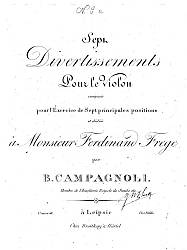
Bartolomeo Campagnoli – 7 Divertimenti
Free Violin Sheet Music
Campagnoli also wrote 30 Preludes for the violin; there’s a Prelude for each of the 24 keys. The Preludes are a bit more difficult than the 7 Divertimenti, but this is another great unaccompanied violin piece to learn!
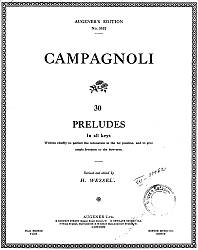
Bartolomeo Campagnoli – 30 Preludes
Free Violin Sheet Music
Advanced
Advanced violin solos are very difficult. This violin music requires a higher level of hand coordination, including bow control and balance to give double stops a good tone.
This repertoire contains more difficult double stops than the ones we saw in the intermediate-level solo violin pieces. The double stops in these solos involve open strings less frequently and the left hand will often have to play two or three notes at a time.
Krzysztof Penderecki – Tanz
Polish renowned composer, conductor, and music educator, four times Grammy Award winner, Penderecki lived from 1933 to 2020. He’s most known for his work “Threnody for the Victims of Hiroshima.” That piece is written in a very different way from the standard music you might be playing, you can check out the enigmatic score here.
Penderecki wrote the violin solo Tanz in 2009 as a gift for a violin student. “Tanz” is German for dance, and this piece is full of fun, dance-like rhythms!
This piece includes lots of double stops, but most of them contain at least one open string, so it’s still fairly accessible to learn.
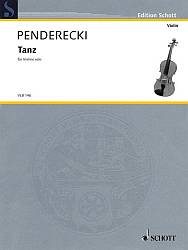
J.S. Bach – Sonatas and Partitas for Solo Violin
The Sonatas and Partitas for Solo Violin by Johann Sebastian Bach are highly regarded as some of the best violin solo music, especially from the Baroque era. They were completed in 1720 but were not published until 1802. They weren’t even performed often until the great violinist Joseph Joachim championed them in the 19th century!
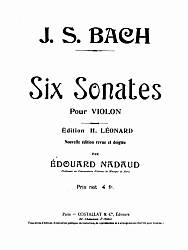
J.S. Bach – Sonatas and Partitas
Free Violin Sheet Music
Pierre Rode – 24 Caprices for Solo Violin
Pierre Rode was a French violinist and composer during the late Classical era. He wrote 13 violin concertos and some chamber music. Since he was also a famous violinist, Ludwig van Beethoven wrote his last violin sonata for Rode.
The 24 Caprices were composed in the early 1800s and were published in 1813. The caprices cycle through the circle of fifths, which gives us a caprice for each key signature. It’s a great way to learn how to play in every major and minor key!
Rode’s 24 Caprices are an excellent choice to make your intonation, hand coordination, tone quality, and balance even better. While they’re repetitive, as most etudes are, these are also melodic and full of beautiful phrases.
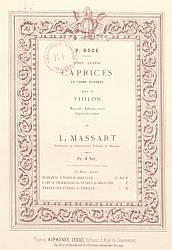
Pierre Rode – 24 Caprices
Free Violin Sheet Music
Giuseppe Tartini – Sonata in G Minor for Violin
Giuseppe Tartini was an Italian composer and violinist in the Classical era. He was one of the first known owners of a Stradivarius violin and was a very influential teacher. He wrote music mostly just for the violin, including over 135 violin concertos and sonatas!
The Sonata in G Minor is also known as the Devil’s Trill Sonata. Tartini explained that he’d had a dream that he made a pact with the devil, and got to hear him play a beautiful piece of music. This piece was an attempt at a recreation of what he heard in his dream.
It’s also insanely tricky: this piece includes double-stop trills! There are many fast runs, and lines and lines of double stops, all happening at the same time.
Tartini thought this was one of the best pieces he’d ever written, but unfortunately, he said that it never came close to the beauty of the music he’d heard in his dream.
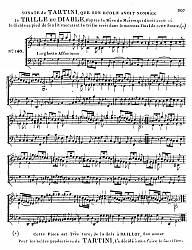
Giuseppe Tartini – Sonata in G Minor
Free Violin Sheet Music
Expert
These are some of the hardest pieces of the violin repertoire. Professional violinists perform these violin solos, and even they struggle with them!
It’s interesting to see that many of the “expert” level solos were written in the 20th or 21st centuries. As the violin grew older, we’ve figured out how to master it more and more. Composers (especially those that play the violin) have caught on, and now write very difficult techniques that the masters have honed.
Just a few of these difficult techniques include double-stop trills, artificial harmonics/artificial harmonic double stops, and left hand pizzicato. Many of the melodies will have the violinist jump over at least one string with the bow, which is very tricky!
Some of these solos also use harmonies that might sound confusing to us if we’ve mostly played earlier composers like Johann Sebastian Bach or Wolfgang Amadeus Mozart. A lot of the melodies in these works will have the violinist playing all the way up the fingerboard, very close to the bridge.
Even though these pieces are the most difficult to play, they’re very fun to listen to! Be sure to listen to a bit of each of them.
Niccolò Paganini – 24 Caprices
Niccolò Paganini is one of the most famous violin performers of all time, but he also wrote violin music. His 24 Caprices were written as etudes, but are often performed for audiences. The caprices are known for their absurd level of difficulty, and when they were written, Paganini was one of the few violinists able to play them! Now, it’s almost required for professional violinists to learn them.
These caprices include extremely difficult techniques like double-stop trills, natural harmonics/natural harmonic double stops, ricochet bowings, and tricky string crossings that include leaps over one or more strings.
Although many pieces written in sets of 24 movements have one movement in each key, Paganini’s caprices don’t follow this pattern. There are a couple of caprices that share the same key – there are a couple in E Major and E flat Major. The only flat keys he used were B flat, E flat, and A flat.
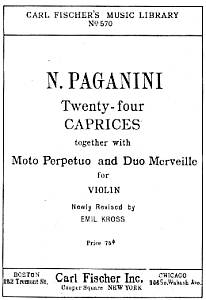
Niccolò Paganini – 24 Caprices
Free Violin Sheet Music
Henryk Wieniawski – L’ecole moderne (Eight Violin Etudes, Op. 10)
Violinist composer Henryk Wieniawski composed and published L’ecole moderne in 1853. These caprices were meant to be performed and sound very flashy.
The caprices cover expert-level techniques, like down- and up-bow staccato, extremely difficult double stops, and fast, intricate runs. They build off the virtuosity of Paganini’s caprices but are repetitive like Kreutzer’s etudes.
No. 7, “La Cadenza,” starts slow and solemn, but builds to an intense cadenza full of quick, high runs up and down the entire fingerboard.
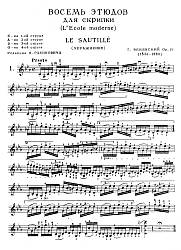
Henryk Wieniawski – L’ecole moderne
(Eight Violin Etudes, Op. 10)
Free Violin Sheet Music
Béla Bartók – Sonata for Solo Violin
Béla Bartók was a famous composer from the 20th century. He made field recordings of Hungarian folk songs, and many of the standard melodies and rhythms pop up in his own music, including this sonata.
This challenging piece was actually inspired by famous violinist Yehudi Menuhin’s performances of Bach’s Violin Sonatas. The first movement of this Sonata is called “Tempo di ciaconna,” because its form and sound were inspired by the Baroque dance called a “Chaccone.” There are even Chaccones in Bach’s Violin Sonatas and Partitas!
The final “Presto” movement includes fast passages in quarter tones. Quarter tones are the pitches between semitones (half steps). They aren’t used much in Western classical music but are popular in Middle Eastern music.
Bartók loved experimenting with quarter tones and other pitches outside of Western classical music, but violinists aren’t always so willing to experiment. Because of this, Bartók also wrote a more “standard” version of the fast quarter-tone passages with semitones (half steps) instead. This is the version that’s performed the most often, but the original sheet music is also available to learn.
Conclusion
I’m so excited for you to learn more about these great pieces of music. What did you think of all of these famous violin solos, do you have a favorite? Is there one you’ll try learning soon? Let me know in the comments below, I always love hearing from you!
